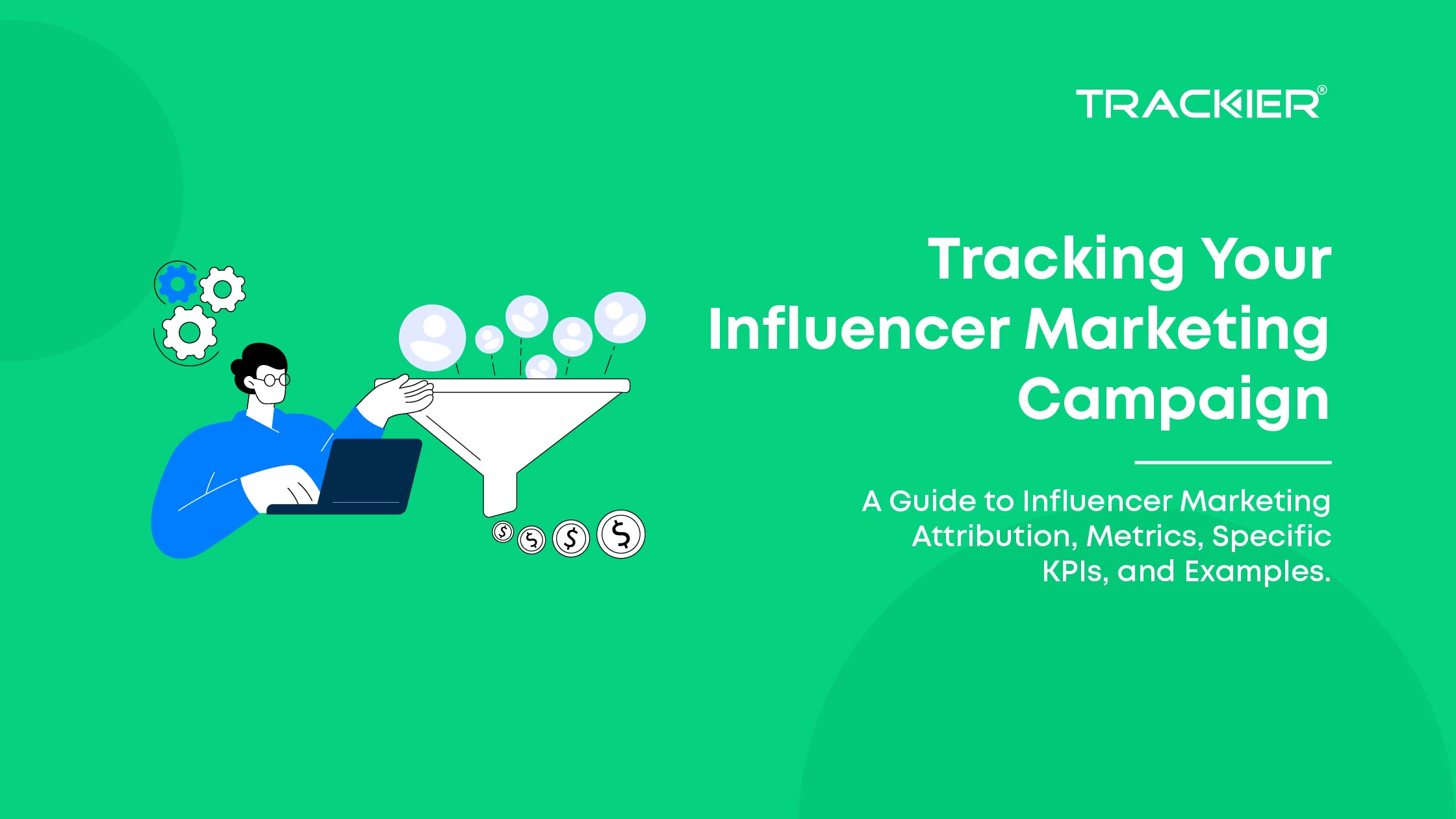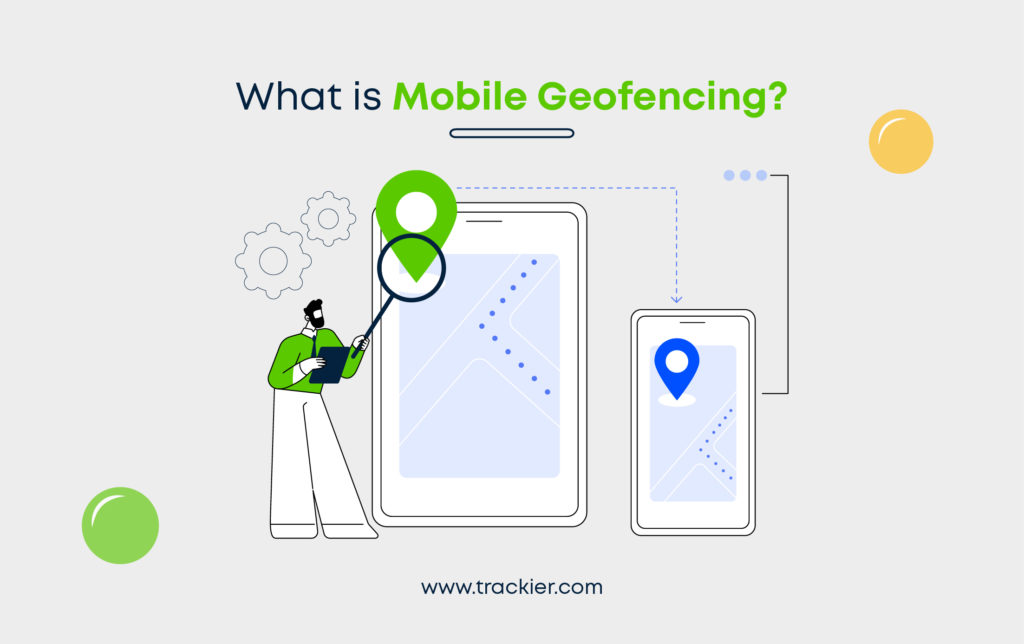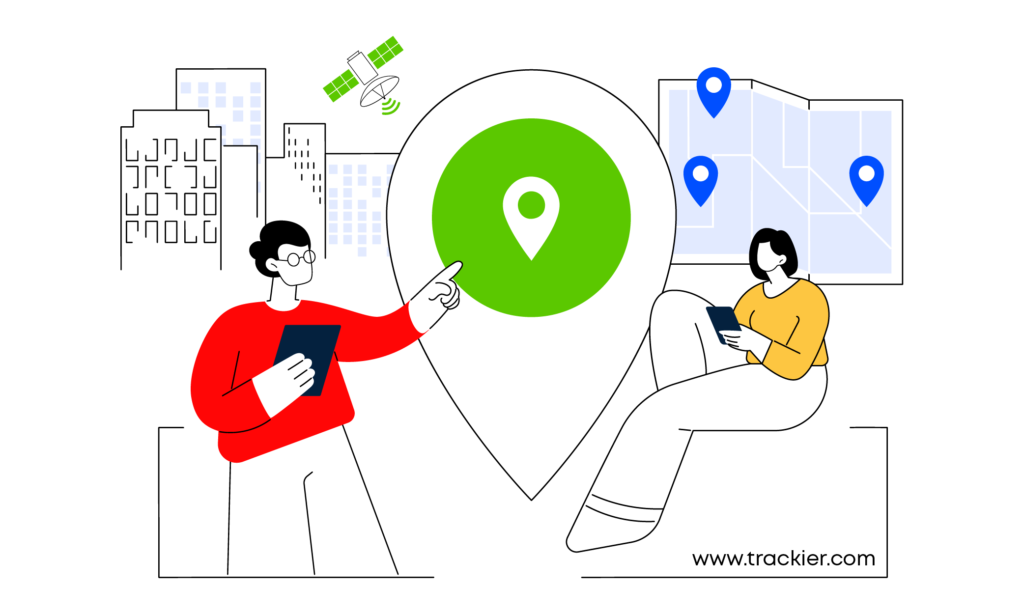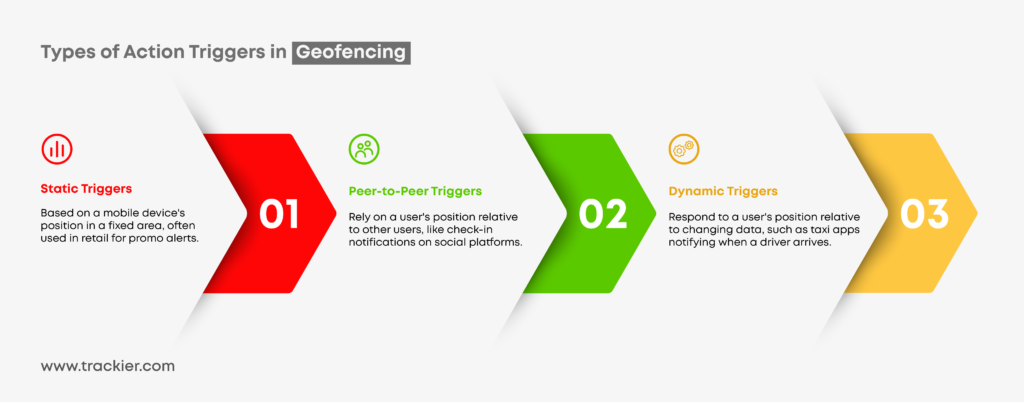According to the definition, Mobile Geofencing is a location-based marketing technique that uses a user’s GPS, Wi-Fi, and cellular data to target them with personalized notifications, offers, emails, etc. based on their location. They use the location data to create virtual boundaries, known as geofences around specific areas with a ‘point of interest’ as its focus – like a retail store, a coffee shop, an event venue, etc.
When a mobile user enters the virtual boundary or the geofence, it triggers pre-defined actions or notifications. For example, Starbucks, a leading coffee house chain, targets its customers with personalized offers to walk into their stores when the latter are in their geofence.
Mobile apps and advertising platforms use location data to deliver hyper-personalized, location-based content, offers, promotions, and notifications to the users within the geofenced area.
Mobile geofencing allows marketers and app owners to target their audience with relevant and timely messages based on their real-time location. It is mainly used to drive traffic to a retail store, restaurant, or event, to increase engagement, and deliver personalized marketing campaigns.
How Does Mobile Geofencing Work?
Here’s a point-by-point explanation of how mobile geofencing works:
- First, a virtual boundary is set around a specific location via GPS or RFID-enabled software. Geofencing software can also be used to draw a boundary of approximately 100 feet or less from a point on Google Maps using APIs while developing a mobile app.
- This virtual geofence will trigger an action(s) whenever a device enters or exits the boundary or is in close proximity to that specific location we mentioned above.
- The geofence is commonly set up within the code of a mobile application. Users of smartphones when opting for location services on their devices, and the geofence picks up data to pinpoint the location of the user.
- For example, if you have downloaded Walmart’s mobile app, the mobile app owner manages the geofence in the app. When you are within the certain limits of a retail store, the app owners have the option to trigger certain actions. Users can always opt out of location sharing with a mobile app.
- iOS users can also use the geofencing capabilities to trigger specific actions when they’re in a chosen area or location. For example, if you’re five meters away from your front door, you want your smartphone to turn on your air conditioning.
Mobile Geofencing Statistics
Mobile geofencing is an incredible technique for mobile marketers looking to personalize their outreach, improve customer engagement, and increase the conversion rate of their marketing campaigns. The statistics speak for themselves:
- In a survey, 90 percent of marketers agreed to increased sales, better customer engagement, and a better understanding of the audience by using mobile geofencing.
- The click-through rate of mobile ads run via geofencing is double the industry average.
- 92% of smartphones support geofencing.
- More than 33% of customers expect a personalized and targeted experience from brands, which mobile geofencing certainly supports.
- Geofencing campaigns are 10 times more effective than other forms of marketing including email.
- 80% of smartphone users want businesses to send them location-based alerts.
- 53% of shoppers visited a retail store after receiving a location-based alert.
5 Benefits of Mobile Geofencing
Marketers always root for mobile geofencing and for good reasons. Let’s explore the benefits of including the geofencing technique in your marketing strategy.
- Hyper-Targeted Advertising: Using the geofencing technique, you can target your audience when they’re closest to your product/service in the customer journey. For example, a tired shopper in the proximity of your coffee shop is a sure-shot conversion when they send out a push notification of an offer personalized just for them.
- Increased Footfall: Your audience wouldn’t know it until you tell them and in this era of short memory span, even a reminder won’t hurt. That’s why a sale/event/offer alert to your users when they’re closest to your store would surely bring more visitors than otherwise.
- Better Customer Engagement: Time and place is of the essence in marketing, whether the place in question is in the customer’s journey or an actual location. Geofencing allows business owners to engage with their customers in the right place at the right time, increasing the chances of meaningful interactions that they will remember for long (if not forever).
- Understand Your Audience Better: Sounds a bit like stalking, but geofencing actually lets you understand your customers better- their behavior, movement, habits, patterns, etc. For example, a regular shopper visits the Madison Avenue store every Friday. With geofencing you can understand this pattern and send them personalized offers to increase chances of conversions.
- Stay Ahead of Competition: If your competitors are not using geofence they’re at a loss and you can take this opportunity to target your customers at the right time. Even if your competitors are using geofencing, you can use the data and insights to understand your customers better and deliver a more personalized experience to them.
5 Common Uses of Geofencing
There are many ways in which geofencing can be used by marketers. Let’s explore them one by one.
-
In-App Notifications
The best application of geofencing is to send personalized in-app notifications. When users enter your geofenced area, you can send personalized offers nudging them to walk into your store.
-
Third-Party App Notifications
Even businesses that don’t have an app at this stage, can use third-party apps to send your notifications. For example, a retail store can use a map app like Waze to send notifications about an ongoing sale or offer.
-
SMS Marketing
Mobile app owners can also send text messages to the users when they enter their geofence. This helps cover a vast audience since not everyone is in a good internet connectivity area.
-
Social Media Advertising
All the leading social media platforms including Facebook, TikTok, and Instagram have the geofencing feature. Through these platforms, you can show your ads to social media users who are in your geofence.
-
Web Advertising
Just like social media, ads are shown to people in a geofence of a business. For example, a Houston-based nail parlor will show the Google search ad to a woman who happens to be searching for a nail parlor nearby while in Houston.
Types of Triggers in Mobile Geofencing
There are 3 types of action triggers as given in the infographic below.
Getting Started With Geofencing in Mobile Marketing
Before you hop on the buzz train, here are a few things to be kept in mind.
- Don’t set the geofence too large. Keep the boundary close to your business. You wouldn’t want to dilute your actual customers in the crowd of irrelevant audiences. As a general rule of thumb, keep the geofence approximately 4-5 minutes of walking distance from your business.
- Keep your CTA clear. While it is easier to give in to the fancy of hip words, it’s the clarity and relevance of your CTA that would drive the audience.
- Don’t invade your customer’s privacy: Let your mobile app users know that you have access to their location data so that you don’t catch them by surprise when you send them a location-based alert.
- Experiment with targeting techniques: Use a mix of different techniques including contextual targeting, day-parting, content targeting, and retargeting to aim for multiple types of audiences.













